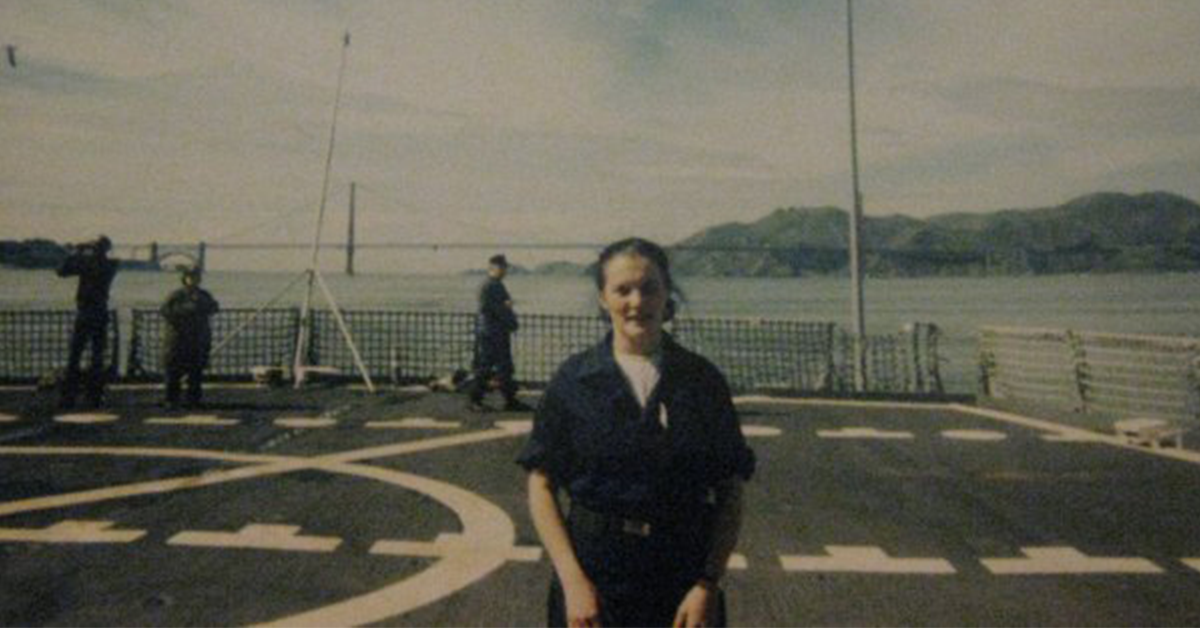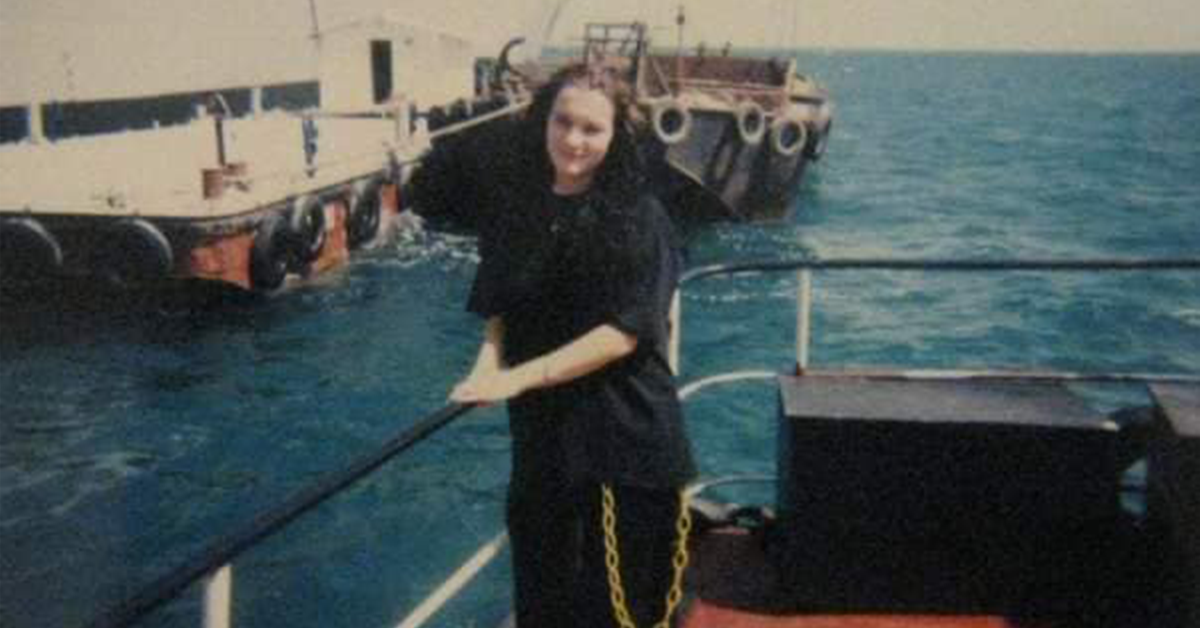
- Colleen enlisted in the U.S. Navy at the age of 18 right after high school
- She applied her experience of equipping ships in the Pacific Ocean to Lam’s supply chain
In recognition of Veterans Day, November 11, in the U.S., Colleen Nummelin shares her experience in the military and what led her to Lam Research.
Colleen Nummelin, senior manager of Supply Chain, jokingly describes her childhood as “something out of Top Gun.”
She was born to a family who has consistently answered the call to serve. Her grandfather proudly wore the U.S. Navy uniform, her great uncle served on the U.S.S. Pecos and now rests in Arlington National Cemetery, and her aunt and uncle met while enlisted in the U.S. Army.
Her family history sparked her interest in the armed forces, but it was her father’s job at the Diablo Canyon Power Plant in San Luis Obispo County, California that ignited her path to the Navy. Colleen yearned to become a nuclear power plant operator – an unorthodox dream job for a high schooler. While sitting with the operators of the plant at a corporate party, Colleen asked them how they got their job. Their secret: “You’ve got to join the Navy.”
Their response stuck with her and after her brother transferred from the Army to the Navy, she had the opportunity to serve alongside him.
Fresh out of high school, at age 18, Colleen enlisted in the Navy. She was sent to boot camp on the East Coast, far from her California roots, surrounded by unfamiliar faces. “It was one of the most terrifying things I’ve been through,” she says. “But by building connections with others, the fear subsided.” The year was 1994.
She took what she had learned at boot camp to the U.S.S. Dixon – one of the few ships in the Navy that permitted female sailors at the time – working in the submarine repair division where her responsibilities included fixing submarine pumps, valves, piping systems, and auxiliary equipment. “I would fix anything from a shelf light so a sailor could read their letter from home to the machine that would keep milk cold to the shower water valve,” says Colleen.

Colleen on her first ship, the U.S.S. Dixon.
Following her deployment on the U.S.S. Dixon, Colleen was stationed at her second ship, the U.S.S. Cimarron, which she affectionately dubbed the “7-Eleven for the Navy.” Spending nearly nine months at sea, Colleen was tasked with getting the right supplies to the right battle group at the right time and location – in the middle of the Pacific Ocean.
After two years, Colleen was temporarily assigned as a shuttle boat operator, bringing visitors to and from the U.S.S. Arizona Memorial in Pearl Harbor, Hawaii, due to a service-related injury. “It was deeply humbling to operate this vessel and hear the stories of people who survived the attack and those who had connections to the site,” she says.
After serving in the Navy for five years, Colleen transitioned to civilian life. The array of choices and decisions she had to make was daunting. “I joined the military after high school and nearly every decision for me was made by the Navy – which job I took, which health insurance I had, and where I lived,” she shares. “The number of decisions I had to make after exiting was crippling.”
She attended a job fair where she met with representatives from Lam and connected to the company’s mission. “In the Navy, there’s a strong connection to mission, history, and purpose. I needed to work for a company where I had something to believe in and be proud of,” says Colleen. “Lam had that – their mission statement and Core Values were solid.”
As Colleen exited the Navy in 1999, she found it challenging to understand how her skills in the military transferred to civilian life. “Lam was able to look at my job in the Navy and understand that it involved electrical fundamentals, controls communication, reading prints, pumps, valves, piping systems, vacuum principles, and other core concepts,” says Colleen. “If I could operate those systems on a U.S. Navy ship, Lam recruiters understood I could likely be able to learn how those systems operated in our tools.”

Colleen pictured with her second ship, the U.S.S. Cimarron, in the background.
Today, Colleen is a senior manager in Supply Chain. “My role on the U.S.S. Dixon prepared me for my current job,” she says. “If I couldn’t deliver fuel to the right ship on time, it couldn’t be deployed. Similarly, if my team can’t supply the right parts, with the right quality at the right quantity, our manufacturing teams can’t deliver a tool to our customers on time.”
“More than 20 years ago, when I first came to Lam, there wasn’t a formalized veterans Employee Resource Group (ERG),” says Colleen. “But, even then, veterans across the company created connections, supported each other, and shared experiences – or ‘sea stories’ as folks in the Navy say.”
“Today, over eight percent of Lam’s U.S. employee base identifies as a veteran and the Lam Veterans ERG brings together current and former service members to connect them with resources to address their unique needs and leverage their skillsets for career development. Engaging in the ERG is my way of giving back,” says Colleen. “I know both sides of the coin – the military and Lam – and I help people understand our company terminology, what we do, what resources are available, and what impact we have on the world.”
And as for the dream job she had in high school to become a power plant operator? She checked that off the list by operating a power plant in Puyallup, Washington but realized it wasn’t quite the right fit for her.
“When I first entered the military, I didn’t know where it would take me,” says Colleen. “But I knew it was my path. I knew that this was my way to contribute to my country.”
Related Articles: